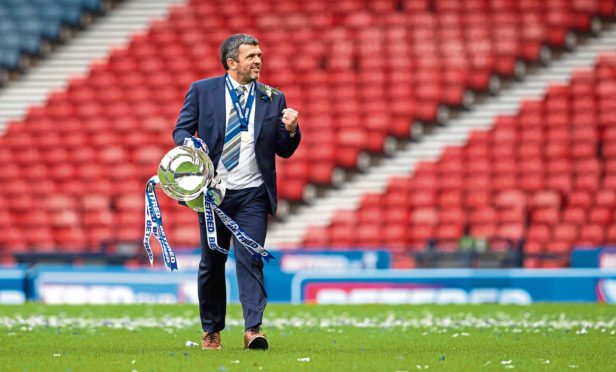
In Mexico City, people arriving for their coronavirus vaccinations get treated to a show.
They are met at the vaccine centres by music and displays of dance, opera singing, and lucha libre, the luridly colourful form of masked and costumed wrestling so popular in the country.
It is part of an initiative to calm the elderly who, staff reported, had been turning up very scared.
Their fear was not surprising.
Mexico has the world’s fourth-highest death toll from the virus, behind the United States, Brazil and India.
How soothing the sight of Kendo Nagasaki look-alikes roaming around in front of a bunch of wannabe Pavarottis might be open to question.
But there, as here, the goal is to get the vaccine into as many arms as possible, as quickly as possible.
In Scotland, where the coronavirus number has, by and large, been getting ever rosier, football fans are delighting in the thought of actually getting to go along and watch games in the flesh, thanks to the decreased risks involved.
UEFA have granted permission for 12,000 to attend our matches at Hampden in the Euros.
But after originally hoping to have 600 fans at Saturday’s Scottish Cup Final between Hibernian and St Johnstone, that has now been shelved.
When it finally comes to either attracting large numbers to the big events, or monitoring their mood once they get there, there will be no need to sweeten the deal.
After waiting for 23 years for Scotland’s return to a major Finals, supporters would easily fill the National Stadium twice over for the ties against Croatia and the Czech Republic were it possible.
Wembley is the biggest stadium in the UK, with a capacity of 90,000, but again the Tartan Army could ensure there was no seat left untaken with no need for a sale south of the border.
And given the number of Hibees faithful that have headed west on the M8 in recent years, in normal circumstances there wouldn’t be many spare seats on Saturday.
There were 37,500 at the 2004 League Cup Final, in which they were turned over 2-0 by Livingston, and they could expect at least as many for this showpiece if the turnout at the Scottish Cup Final against Rangers five years ago is anything to go by.
Their opponents this time would also have a healthy following for the Perth club’s pursuit of a historic cup double.
With no disrespect to Jack Ross’s men, who clinched their place with a slick victory over Dundee United, success for Callum Davidson’s side would be a fitting finish to what has been a remarkable season.
When the game was sent behind closed doors last summer, there was a widespread fear the action would suffer as a consequence.
That players, with no fans providing instant feedback, would simply go through the motions, leaving television audiences cold from what was effectively a succession of training games.
Happily, nothing could have been further from the truth.
The 2020-21 campaign has been spectacular, dramatic and passion-filled.
It has been as if – with the coronavirus confining not only football fans, but also the entire population at home – scriptwriters had felt compelled to up the ante.
To provide the blockbuster action and plot twists that will keep the nation gripped, much as the cop-on-cop drama Line Of Duty kept the nation teased and tormented in equal measure.
Thick in the mix was the meltdown of 10-in-a-row-chasers, Celtic – at home and abroad – leading to protests and, as a consequence, the departure of Neil Lennon.
Add to that Peter Lawwell’s abdication as chief executive, not to mention the winter-training trip to Dubai, plus the shock defection of Scott Brown to Aberdeen.
And that’s just Celtic.
There was also Rangers’ invincibility in the league and, for long chunks of time in Europe, leading to Steven Gerrard’s first title win as a player or manager.
The list goes on.
The end of Derek McInnes’s eight years in charge of the Dons, and the sad passing of Dundee United icon, Jim McLean.
Breaches of Covid regulations, the sanctions that followed and a snappy new, self-explanatory word for the times – covidiots.
The defiant “comeback” of those controversially sent down when the 2019-20 season was called with fixtures remaining.
And Hearts march back up to the Premiership, Partick Thistle likewise to the Championship and, possibly, Stranraer’s return to League One.
It has been quite a season, and it is not over yet.
More of the same please for 2021-22 – only with fans back, and let football’s “new normal” of empty stands be confined, like Mexico’s vaccination entertainments, to memory as an oddity of the time.

Enjoy the convenience of having The Sunday Post delivered as a digital ePaper straight to your smartphone, tablet or computer.
Subscribe for only £5.49 a month and enjoy all the benefits of the printed paper as a digital replica.
Subscribe